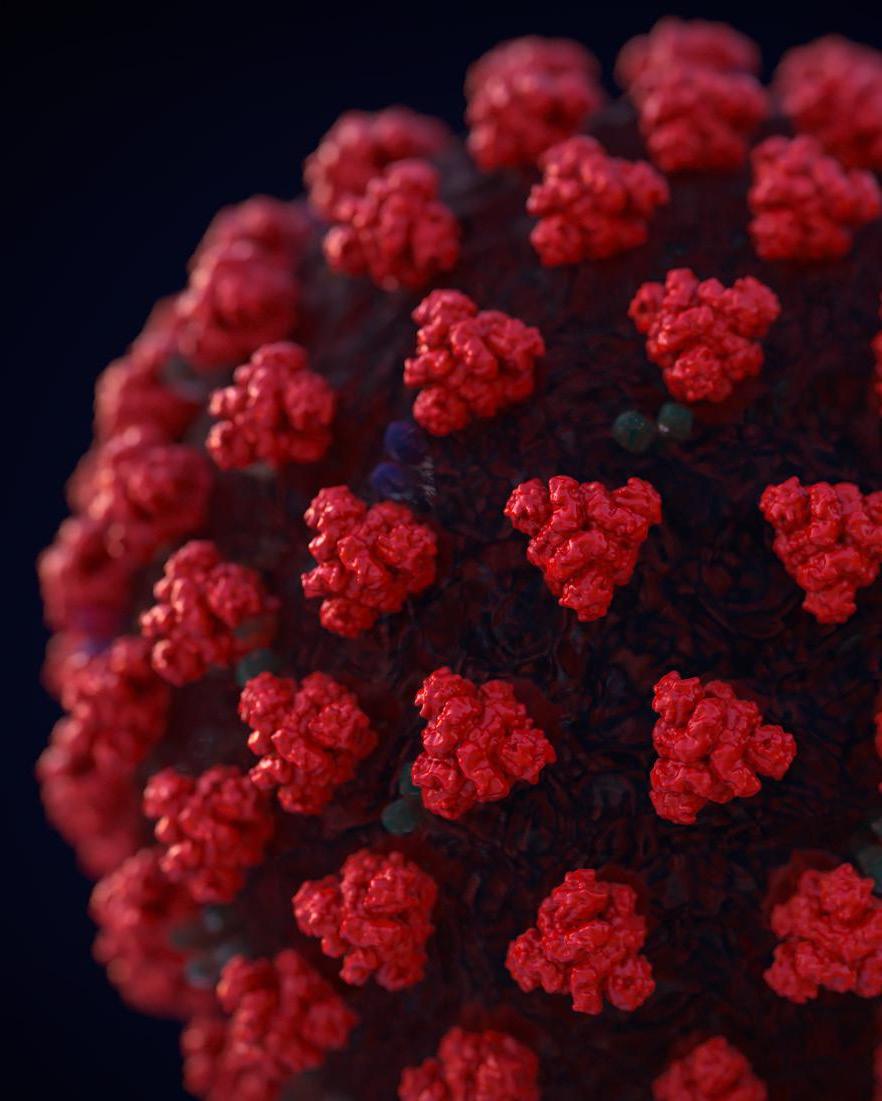
5 minute read
01. Filling the urgent need for testing
Testing is essential to help identify and isolate infected individuals. As Arizonans return to the workplace, schools and other daily activities, testing early and often provides a key way to prevent the spread of COVID-19. But labs have been unable to keep up with demand, plagued by shortages in the supply chain for testing kits and reagents. This meant limited availability of tests and long wait times for results. ASU researchers rose to the challenge.

Rapid robotic testing

With unprecedented speed, ASU’s Biodesign Institute shifted its capabilities to create a clinically approved and certified COVID-19 testing lab in a mere two weeks.
The Biodesign Institute was poised to make the rapid shift as researchers pivoted automated diagnostic technology originally developed to detect radiation exposure to a new target: coronavirus genetic markers. The team’s high-throughput, robotic system has the ability to run thousands of samples a day, greatly increasing Arizona’s COVID-19 testing capabilities and providing results within about 48 hours.
Prior to the pandemic, the Biodesign Institute was purely a research facility that wasn’t designed to handle clinical work. The institute brought in a clinical pathologist and worked closely with the Edson College of Nursing and Health Innovation to make key clinical decisions and meet regulatory standards, all while operating under extremely unusual conditions — like taking samples from people in cars at drive-thru sites.
— Pat Dinkel, vice president of strategy and risk, APS

ASU has rapidly scaled up its testing capacity. In its first six months, the lab processed more than 50,000 tests. By early August, it was running over 12,000 tests per week with plans to continue expanding capacity.
— Tamara Deuser, chief operating officer, ASU Knowledge Enterprise

A $2 million donation in emergency grants from the Virginia G. Piper Charitable Trust vastly expanded the university’s efforts to coordinate responses to the novel coronavirus pandemic.
— Mary Jane Rynd, president and CEO of Virginia G. Piper Charitable Trust
Arizona’s first saliva-based test

Making COVID-19 diagnostic testing easier and more readily available to Arizonans, researchers at the Biodesign Institute also developed the state’s first saliva-based test.
The new saliva-based test is a game-changer for several reasons. It is less invasive and uncomfortable for participants than nasopharyngeal (NP) swab tests. It is safer for testing staff, because NP swabs often cause participants to cough or sneeze. Because of this, testing staff need less PPE, which can be scarce. And it eliminates the need for scarce swab kits.
Serving the underserved
Initially, ASU partnered with local organizations to provide tests to essential workers and underserved populations. Over the summer, the university forged a new partnership with the Arizona Department of Health Services to provide free, public COVID-19 testing in high-need communities around the state. Through this partnership, ADHS has committed up to $12.7 million to fund the expansion of testing sites to serve up to 100,000 Arizonans.
— Arizona Governor Doug Ducey

‘Spit on a chip’ device poised to speed test results
Reopening Arizona’s economy while managing the spread of COVID-19 demands rapid, safe, inexpensive testing for the state’s roughly 3.5 million workers. ASU scientists and engineers are working to meet that critical need by adapting a test originally designed to detect the Zika virus. This noninvasive point-of-care device would use saliva samples to detect COVID-19 infection and provide results in about 20 minutes.
Safeguarding communities

Together with the Maricopa County Department of Public Health, Mayo Clinic and Phoenix College, ASU researchers and students are contributing to an ambitious project to better understand the prevalence and spread of COVID-19 cases in the county. The Serosurvey project is deploying field teams to randomly selected households in Maricopa County and requesting blood samples to test for antibodies. Antibodies are proteins that our bodies produce in response to an infection. They can tell us who had COVID-19 in the past, even if they didn’t have symptoms. The survey data can help inform robust public health policy going forward and safeguard the community.
ASU also created a COVID-19 Response Team which includes a Case Investigation Unit, Contact Tracing Unit and a Community Response Unit to improve the health of communities and generate positive social impact. The Case Investigations Unit set up a virtual call center staffed by ASU students and volunteers to contact more than 100 confirmed COVID-19 patients daily, while the Community Response Team deployed to communities in need to help support safe home isolation.








